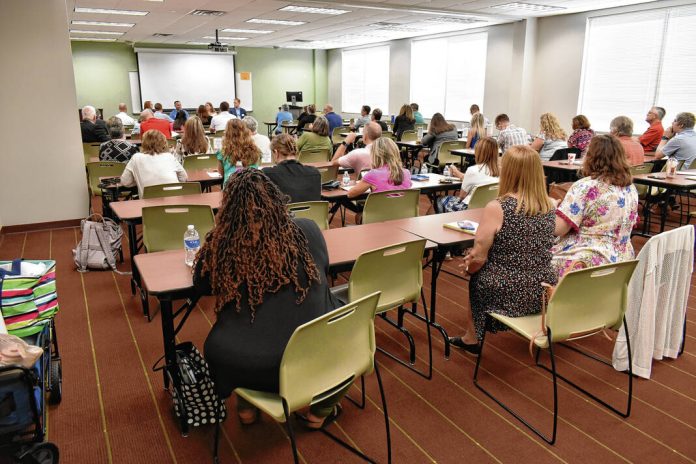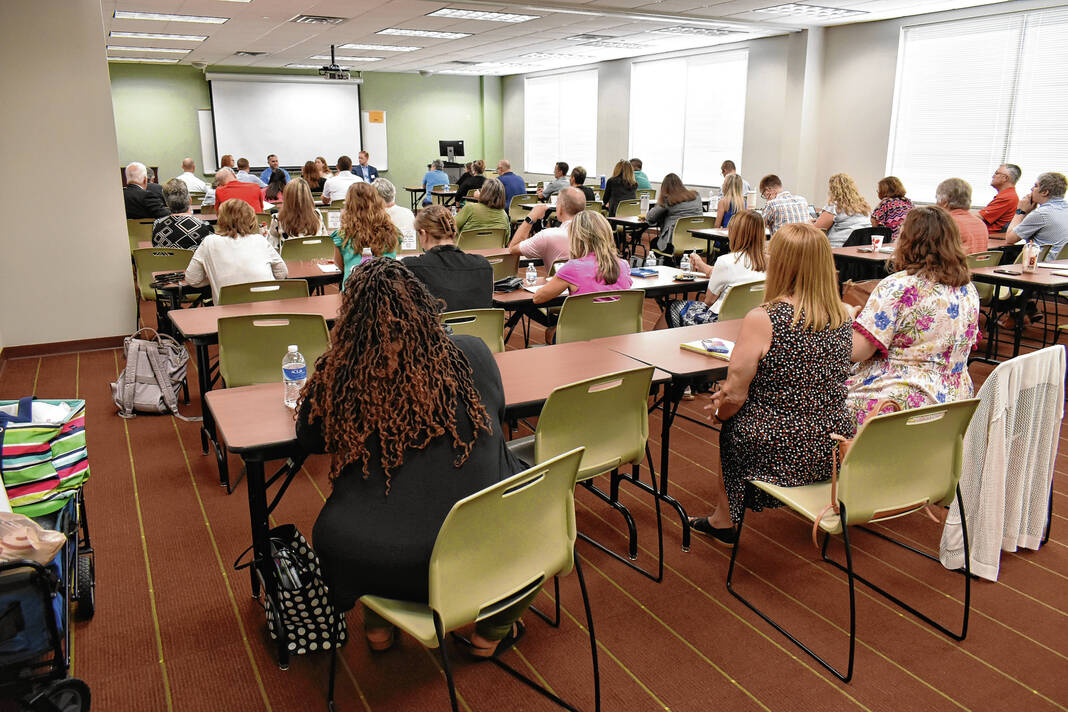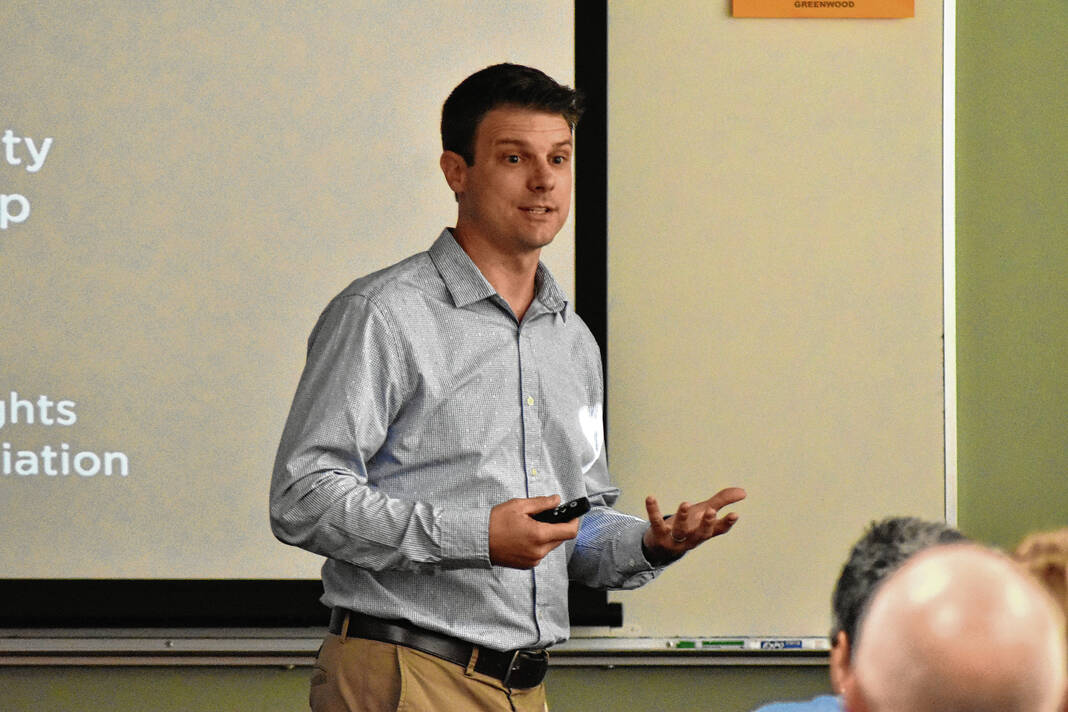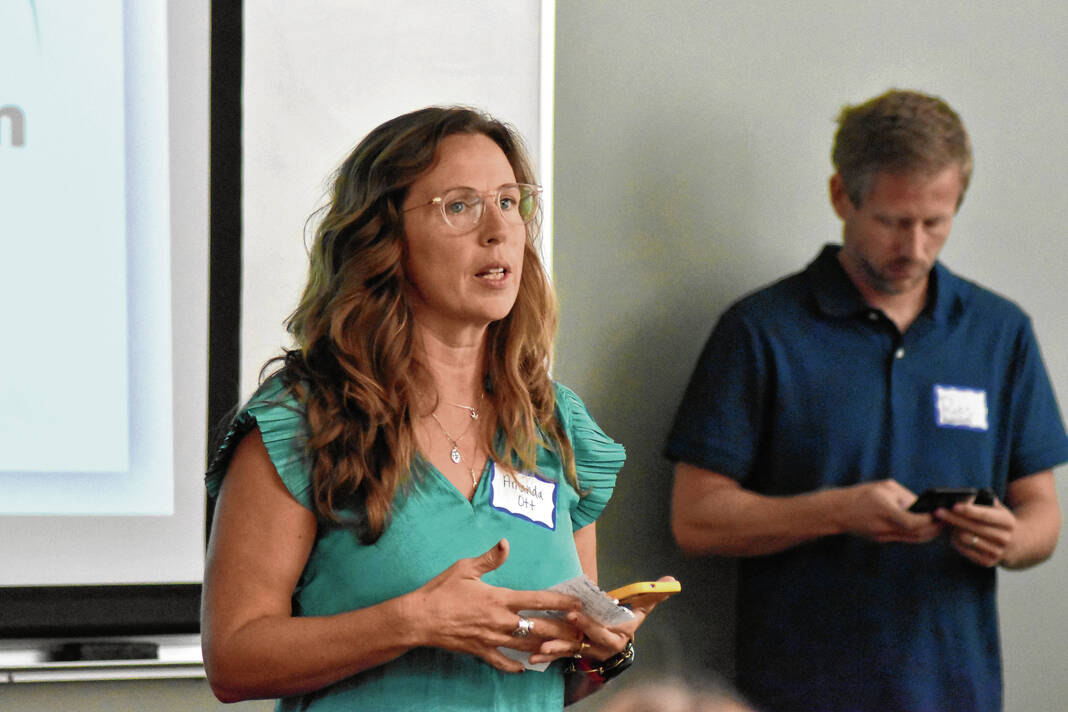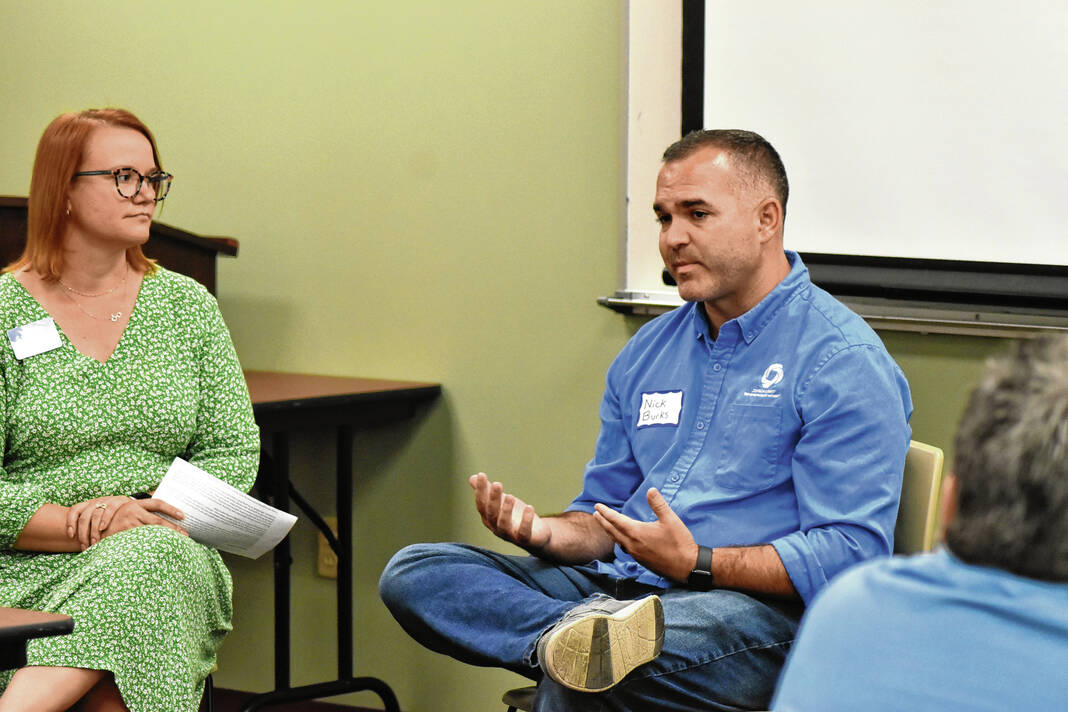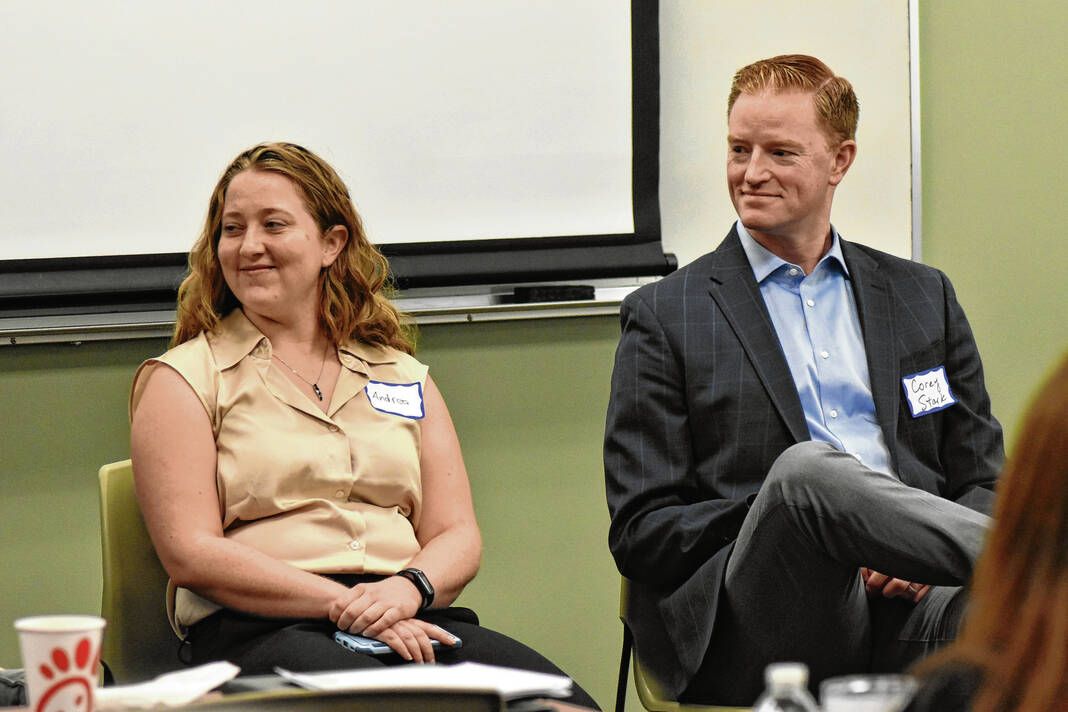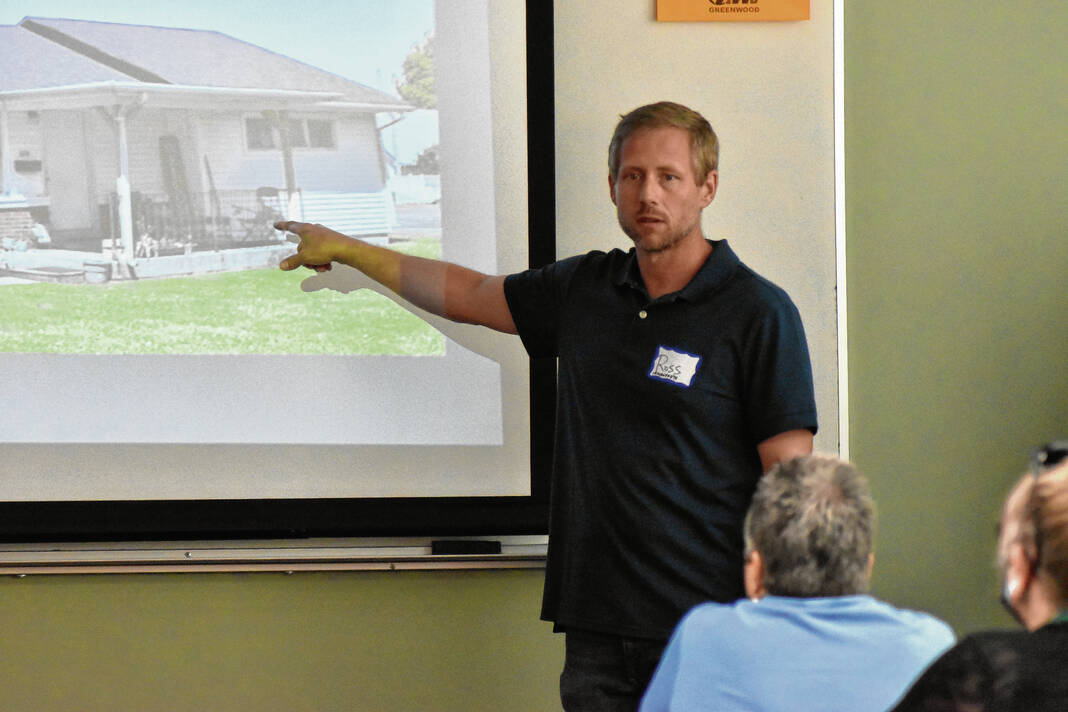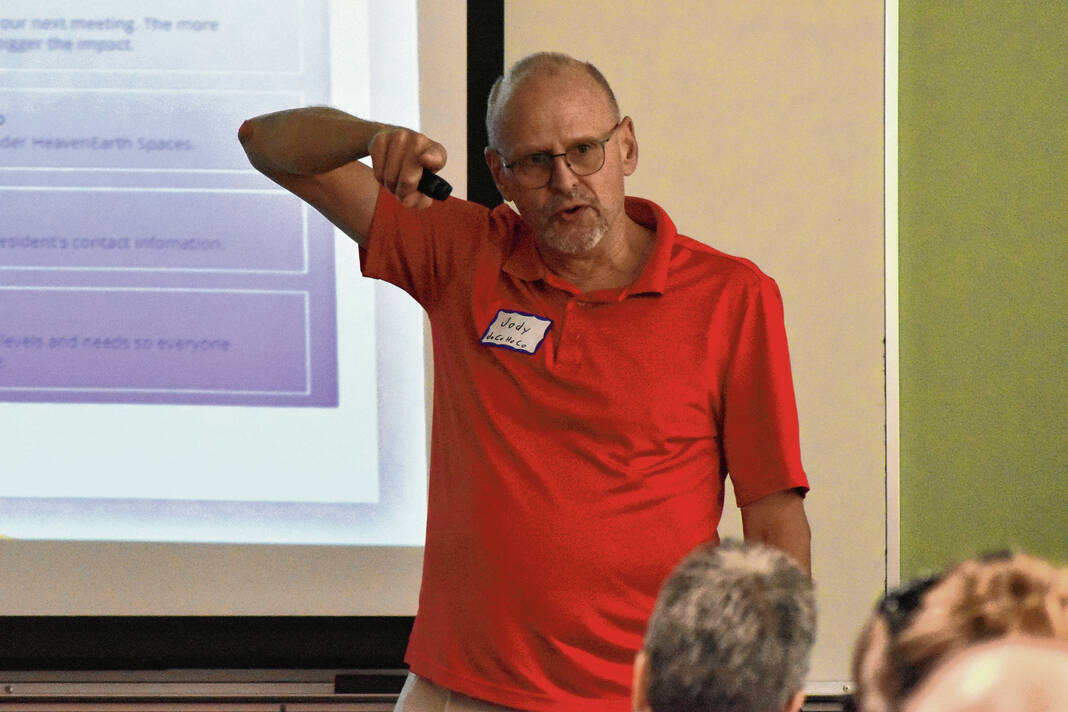Leaders from across Johnson County learned about the challenges facing the housing market and new coalition at a workshop Tuesday.
Speakers and panelists discussed the state of Johnson County’s housing market, housing inventory, affordable housing and the launch of a housing coalition during an Aspire Johnson County Community Workshop at Indiana Wesleyan University in Greenwood.
Affordable housing is not as simple as “Section 8,” said Amanda Rubadue, vice president of economic development for Aspire.
“For today’s purposes, generally, affordable housing is housing that is less than 30% of your income,” she said.
From a business perspective, housing has become a “critical part” of businesses’ search process when they determine where to invest and grow, said Brad Coffing, director of housing insights for MIBOR. It used to be that the MIBOR Realtor Association would occasionally get a call from the economic organizations, but for the last few years, companies have been pushing more and more for the information, he said.
State of the market
For Central Indiana, there were an estimated 2,874 closed sales of single-family homes for the 16-county region. Compared to a normal July, the region is about 1,500 homes off from where it usually would be, Coffing said.
As for Johnson County, there were about 212 closed sales in July, up 6.5% from the previous year and up about 1.6% year-to-date, he said. New construction made up about 16.5% of sales in July, though Coffing says this number doesn’t catch all of the construction.
Higher interest rates on mortgages have often been cited as a factor for slower home sales, along with higher prices and low inventory. There’s been a little bit of movement on this, but not enough to “kick start things,” Coffing said.
While buyers had been expressing hesitation about purchasing a new home, over the last six months data has indicated that they’ve started to acclimate to the prices, Coffing said.
The average mortgage payment was estimated at $2,315 in July, down from the record high of $2,570 in June. Across the metropolitan area, 84% of outstanding mortgages have a rate over 6%, Coffing said.
In terms of MIBOR’s housing affordability index, for a long time Johnson County was a “very affordable place,” Coffing said. However, over the last two years, it has become a more challenging environment, he said.
As communities and developers work on their strategies for growth, they should make sure their strategies are based on data or what’s happening in the “real world” — not on social media, Coffing said.
“We have a lot of wonderful experts in the room who know the marketplace, know consumers,” he said.
Panel discussion
Later in the workshop, discussions shifted toward a recent Indianapolis Metropolitan Planning Organization regional housing study and what could be done for attainable housing.
Most of the housing study was grounded in a general understanding of the market in the Indy area — housing prices, housing inventory, what the gap is between what people would prefer for housing, what they can afford and what’s available. But it also looked into the effect of corporate single-family investors in the region, said Andrea Miller, a senior planner for the IMPO.
Going into the study, Miller knew that investor-bought housing was a thing in Indianapolis, but didn’t realize how widespread it was throughout the region.
“I was surprised at just how widespread it was, and the degree to which, in certain neighborhoods, 30% or more of these single-family homes are owned by these companies,” Miller said.
Miller also noted that investors are not buying run-down homes, but rather newer homes. She highlighted a conversation she had with a corporate investor who said their main strategy was to buy 2,000 square foot homes ” built in the 21st century, preferably in a homeowner’s association with a two car garage, a front and back yard,” she said.
“That is what they’re looking to buy now,” Miller said.
One of the biggest challenges with affordable housing is addressing the negative perceptions of it. A lot of people think of it as Section 8 housing, but it is more than that, said Cory Stark, a vice president of finance for Birge & Held.
“A lot of the perception is affordable housing is public housing, government-owned housing; it’s attracting crime, when actually every housing study on affordability says the opposite,” Stark said.
From a development standpoint, including the creation of new affordable housing and preservation of existing options, Stark’s company uses programs like the Low Income Housing Tax Credit and works with the state to access capital markets to fill in gaps. What they do is provide housing at discounted rents, and they can only charge so much to be able to pay those costs, he said.
A new term has recently become more prominent when referring to affordable housing: attainable housing. The goal of the term is to help remove some of the stigma around the original term, experts say.
Introducing a coalition
Near the end of the workshop, community and business members were introduced to a new county organization hoping to support and improve access to attainable housing: the Johnson County Housing Coalition.
The coalition, also known by its shorthand as JoCoHoCo, has been established to support attainable housing in the county through education, policy change and increased diversity of inventory. The coalition was formed under HeavenEarth Spaces, a 501(c)(3) nonprofit affiliated with HeavenEarth Church in Whiteland and headed by Ross Stackhouse, pastor of the church.
JoCoHoCo’s board is made up of five people who, through their work in the community, have learned about and taken interest in housing issues. While not officially members of the coalition, organizations who regularly attend meetings include Aspire Johnson County, United Way of Johnson County, Bridges Alliance of Johnson County and Upstream Prevention. Representatives of real estate firms, property management companies, home construction and churches also sometimes attend, as has Johnson County Health Department Director Betsy Swearingen. The board also keeps in touch with local officials or met with them to discuss how they can be involved.
Stackhouse said HeavenEarth became involved with housing through its work to make a “lasting impact” on the community and to help those who are struggling with poverty, addiction or religion.
“In my work, everything came back to housing. It comes back to housing,” he said.
HeavenEarth owns a home, which they intentionally rent out for $750 a month to be affordable. They also recently applied for a grant to try to acquire another property to rent out affordably, he said.
Amanda Ott, the president of JoCoHoCo, said their vision is to have housing in the county aligned with the needs of each household, and that it will be safe. They want to bring collaboration between nonprofits instead of them trying to do “piecemeal” things, she said.
“Are there ways that we can collaborate where we can we can have a greater effect on things? So that’s part of this,” Ott said.
The organization also wants to become a trusted resource. There are plans to have a landlord database to give nonprofits accurate information about landlords, to compile resources and to create a housing inventory dashboard. Other plans include helping promote affordable housing and eventually adding a part-time employee, she said.
In the meantime, the coalition is looking for support, particularly more volunteers, said Jody Veldkamp vice chair of JoCoHoCo, a member of Bridges Alliance and marketing and community relations manager for the Johnson County Public Library.
People who are unable to volunteer could also donate or publicly support them, Veldkamp said. They’d love for any organization or business in the county to step forward and show support, he said.
JoCoHoCo also recently launched a web portal for people to learn more, donate and get involved. It can be found at bit.ly/m/JoCoHoCo.


